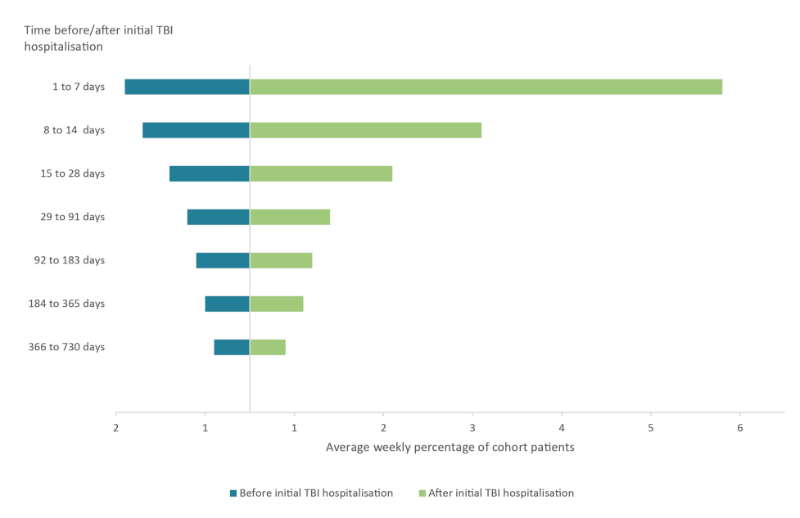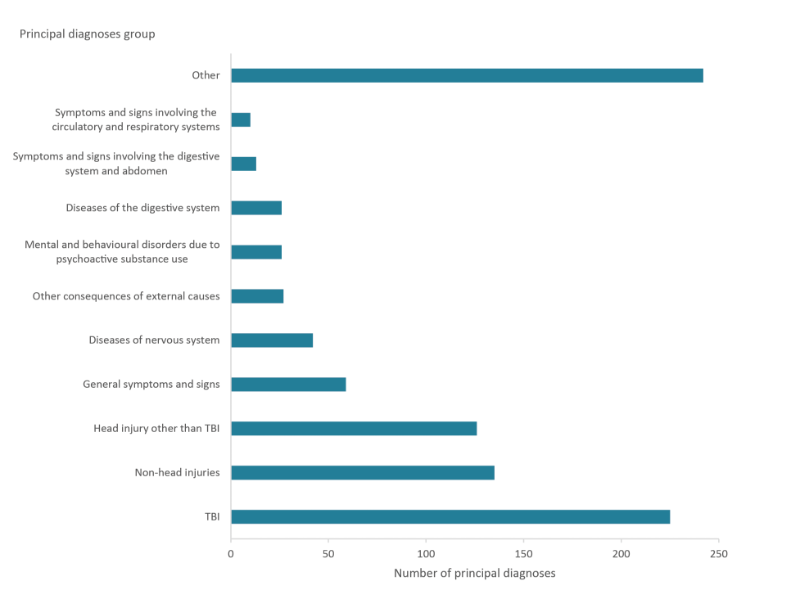Hospitalisations
A total of 5.3% (1,200) of patients in the cohort were re-admitted to hospital in the week following their initial TBI hospitalisation (Figure 19; Table S13). This percentage dropped to 2.6% by the second week after hospitalisation and 1.6% in weeks 3 to 4.
In the week before the initial TBI admission, 1.4% of patients in the cohort were admitted to hospital but did not have a TBI diagnosis at that time.
Figure 19: Cohort patients with a hospital admission in the two years before and after the initial TBI presentation

Source: AIHW NIHSI AA v0.5.
The number of readmissions during the two years after the initial TBI was 27,000 (Table S14). This demonstrates that some patients had multiple readmissions. Of these, 61% (16,400) were emergency admissions, with the remainder being non-emergency admissions, including elective (planned) admissions and admissions where urgency category was not stated (Table S15).
Examining the first week after the initial TBI hospitalisation, the most common principal diagnosis for readmission on an emergency basis was TBI (24% of readmissions) (Figure 20; Table S15). Other types of injuries (non-TBI head injuries and non-head injuries) accounted for 27% of the readmissions.
Figure 20: Most common principal diagnosis groups reported for emergency admissions within 7 days after initial TBI hospitalisation

Source: AIHW NIHSI AA v0.5.


